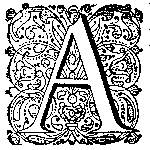The Orangist Appropriation of Erasmus
From Orangism to Erasmianism
DOI:
https://doi.org/10.51750/emlc13530Keywords:
historiography, reception history, Desiderius Erasmus, Erasmianism, William of Orange, OrangismAbstract
The attribution of an Erasmian spirit to William of Orange is tenuous but has nevertheless been made consistently since the early twentieth century. This article makes use of reception theory to connect this association to events of the early nineteenth century that happened in response to the French dominance in the Netherlands and their subsequent expulsion. In 1810 and 1813 Rotterdam Orangists and opponents of the French presence appropriated the Erasmus statue in the city for their own cause by adorning it with orange accessories and by attaching short verses to it. The repetitive recollection of these events throughout the nineteenth and early twentieth century culminated in the attribution of an Erasmian mind to William of Orange, who was himself associated with Orangism as of the twentieth century. While the initial Orangist actions were local and public endeavours, the association gradually entered the national political and academic sphere in the twentieth century. This transfer is exemplary for the changeability of ‘isms’ such as Orangism and Erasmianism. This article therefore ultimately emphasizes that besides the caution it requires, this changeability provides opportunities for reception histories.
Downloads

Published
Issue
Section
License
Copyright (c) 2024 Sanne Steen

This work is licensed under a Creative Commons Attribution-NonCommercial 4.0 International License.





